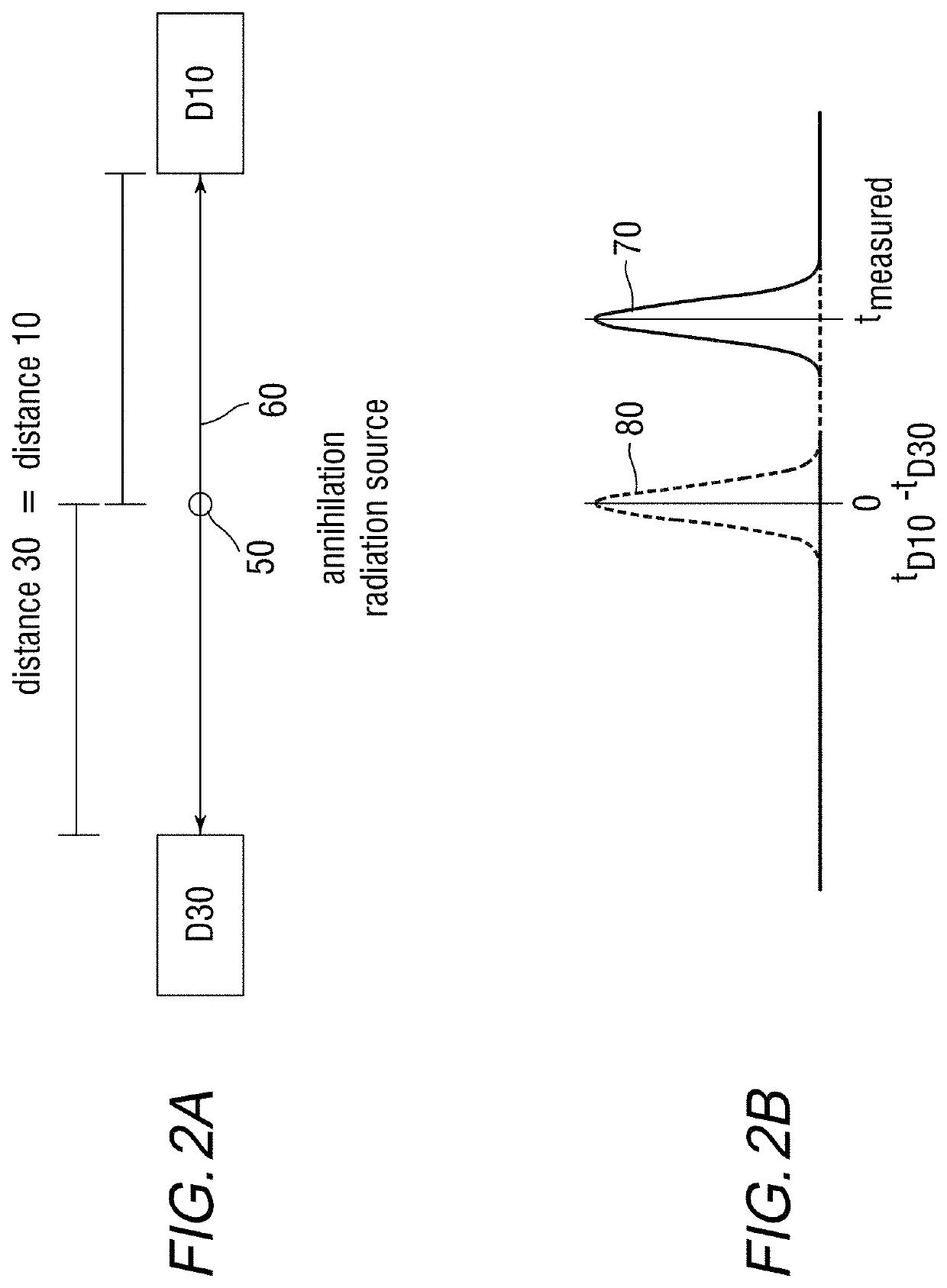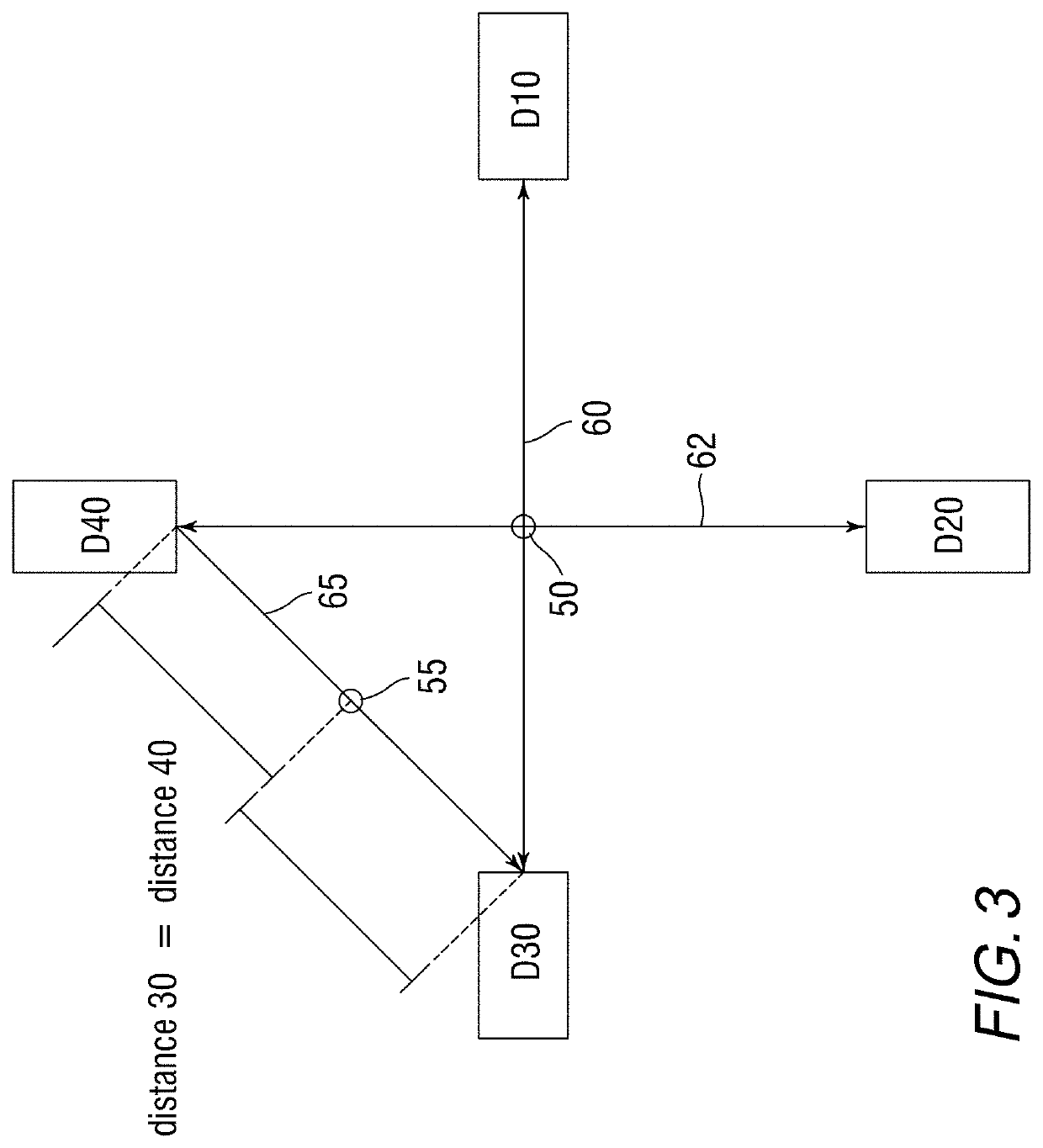Timing calibration using internal radiation and external radiation source in time of flight positron emission tomography
a technology of positron emission tomography and internal radiation, which is applied in the direction of tomography, x/gamma/cosmic radiation measurement, instruments, etc., can solve the problems of difficult handling, inability to determine three unknowns from two equations, and inapplicability, so as to reduce the required number of counts and achieve reasonable acquisition time for internal radiation.
- Summary
- Abstract
- Description
- Claims
- Application Information
AI Technical Summary
Benefits of technology
Problems solved by technology
Method used
Image
Examples
Embodiment Construction
[0068]Reference throughout this specification to “one embodiment” or “an embodiment” means that a particular feature, structure, material, or characteristic described in connection with the embodiment is included in at least one embodiment of the application, but do not denote that they are present in every embodiment.
[0069]Thus, the appearances of the phrases “in one embodiment” or “in an embodiment” in various places throughout this specification are not necessarily referring to the same embodiment of the application. Furthermore, the particular features, structures, materials, or characteristics may be combined in any suitable manner in one or more embodiments.
[0070]A PET scanner in the present embodiments may have different electronics architectures. Non-limiting example layouts are shown in FIG. 9 and FIG. 10, where:
[0071]PET scanner: a whole scanner, usually in the form of a ring.
[0072]Region: a relatively large part of the scanner, such as a quadrant, which consists of advanc...
PUM
 Login to View More
Login to View More Abstract
Description
Claims
Application Information
 Login to View More
Login to View More - R&D
- Intellectual Property
- Life Sciences
- Materials
- Tech Scout
- Unparalleled Data Quality
- Higher Quality Content
- 60% Fewer Hallucinations
Browse by: Latest US Patents, China's latest patents, Technical Efficacy Thesaurus, Application Domain, Technology Topic, Popular Technical Reports.
© 2025 PatSnap. All rights reserved.Legal|Privacy policy|Modern Slavery Act Transparency Statement|Sitemap|About US| Contact US: help@patsnap.com



